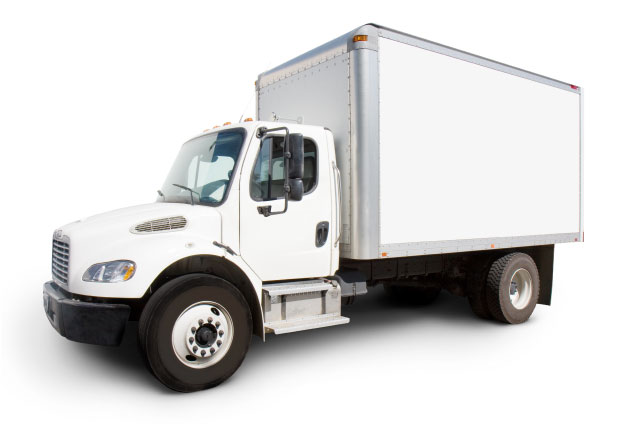Seamless Moving: Top Strategies for Packing Right
Posted on 04/06/2025
Seamless Moving: Top Strategies for Packing Right
Moving to a new home can be an exhilarating yet overwhelming experience. Whether you are relocating across town or to another state, the packing process often determines how smoothly your entire move unfolds. To ensure your move is as seamless as possible, it's crucial to master the art of smart and efficient packing. In this comprehensive guide, we will explore top strategies and expert tips for packing right and ensuring a stress-free transition to your new space.

Why Is Packing Right So Important for a Seamless Move?
Poor packing is one of the leading causes of damages, misplaced items, and unnecessary stress during a move. Strategic packing not only ensures your belongings are protected, but it also makes unpacking simpler and faster. Moreover, proper packing can help you save time and money by minimizing the risk of breakage and reducing the number of boxes needed.
- Protects Fragile Items: Thoughtful packing tactics cushion your valuables against bumps and drops.
- Saves Time: An organized packing approach streamlines both the move and the unpacking process.
- Reduces Costs: Efficient use of space means fewer packing supplies and moving boxes are needed.
- Minimizes Stress: Labeling and categorizing items make it easier to find what you need right away.
Main Strategies for Packing Right: Your Comprehensive Guide
Below is a detailed breakdown of the best packing strategies recommended by moving experts. Adopting these techniques can turn your moving day into a seamless experience from start to finish.
1. Develop a Strategic Packing Plan
Planning is the cornerstone of packing effectively. Begin the process several weeks before your moving date and create a clear timeline with deadlines for each stage. This will ensure that you avoid last-minute stress and rushed packing. List all rooms and categorize belongings by priority and frequency of use. For a seamless move, always start with items that you use least frequently, such as seasonal clothing, decor, and collectibles.
- Inventory Your Belongings: Use a spreadsheet or home inventory app to keep track of your items.
- Set a Schedule: Assign packing tasks to specific dates.
- Involve the Whole Family: Delegate responsibilities to all members of your household.
2. Declutter Before You Pack
One of the most effective moving strategies is to declutter your home before packing. Moving fewer items not only lightens your load, but it also saves on packing supplies and moving costs. Sort through each room and set aside items to donate, sell, recycle, or discard.
- Ask yourself: "Do I really need this?"
- Host a garage sale or list items on online marketplaces.
- Donate gently-used goods to local charities.
- Recycle electronics and other specialty items responsibly.
3. Gather High-Quality Packing Materials
Investing in robust packing supplies is an essential step to safeguard your possessions and guarantee a seamless move. At a minimum, you'll need sturdy moving boxes, packing tape, bubble wrap, packing paper, and markers for labeling. Consider specialty boxes for fragile items such as dishes, art, and electronics.
- Use uniform-sized boxes for easier stacking in the moving truck.
- Don't overpack boxes--keep weight below 50 pounds to avoid breakage and injury.
- Label all sides of each box with its contents and destination room.
4. Master Professional Packing Techniques
Adopting professional packing techniques will ensure the safety of your belongings while maximizing space and minimizing movement during transit. Packing right is about much more than just throwing items in boxes--it involves careful planning and attention to detail.
- Wrap fragile items: Use packing paper and bubble wrap generously to protect breakables.
- Fill empty spaces: Crumple paper or use soft items such as towels to prevent items from shifting.
- Pack heavy items first: Place heavier items at the bottom and lighter items on top.
- Bundle cables and cords: Use twist-ties or zip ties to organize cords and prevent tangling.
- Disassemble large furniture: Remove legs from tables, take apart bed frames, and keep all hardware in labeled zip bags.
5. Label and Organize Every Box
A systematic labeling system is key for a seamless move and easy unpacking. On each box, mark the room it belongs to, its contents, and any special handling instructions, such as "Fragile" or "This Side Up." Consider color-coding boxes by room for even more efficient organization.
- Use bold, clear handwriting.
- Affix labels to multiple sides for visibility in tight spaces.
- Make a master inventory list to check off items as you unpack.
6. Pack a 'First Night' Essentials Box
Nothing is worse than arriving at your new home and having to dig through boxes for basic items. That's why it's vital to prepare a first-night box containing essentials. This separate box or suitcase should be packed last and loaded last for easy access.
- Toiletries (toothbrush, toothpaste, soap, toilet paper)
- Medications and glasses/contact lenses
- Change of clothes and pajamas
- Phone chargers and basic electronics
- Important documents
- Snacks and bottled water
- Bedding and towels
7. Handle Specialty Items with Care
Some household items--such as antiques, artwork, electronics, and large appliances--require special attention. If you want a truly seamless packing and moving experience, be sure to use the right techniques and materials for these valuables.
- Antiques & fragile decor: Wrap in acid-free paper and use custom crates if possible.
- Electronics: Return to original packaging if available and remove batteries.
- Appliances: Disconnect, clean, and dry thoroughly before moving.
8. Enlist Help from Professionals
If your budget allows, hiring professional packers or a full-service moving company can drastically simplify your move. Pros bring experience, high-quality materials, and efficiency to the job. At the very least, consider using pros for the most challenging rooms--like the kitchen or garage--or for valuable and fragile belongings.
- Read online reviews before choosing a moving company.
- Get quotes and compare services.
- Check for insurance and licensing credentials.
Bonus Tips for Packing Right and Moving Seamlessly
- Take photos of electronics before disconnecting to make reassembly a breeze.
- Keep important documents with you, not in moving boxes.
- Use suitcases for heavy items like books, since their wheels make transport easier.
- Seal all liquid containers with plastic wrap under the lid to guard against spills.
- Defrost your refrigerator at least 24 hours prior to moving day.
Common Packing Mistakes to Avoid
- Waiting until the last minute: Hastily packed boxes are more likely to result in damage and chaos.
- Using low-quality supplies: Cheap boxes or weak tape can lead to disaster in transit.
- Ignoring box weight limits: Overloaded boxes are unsafe to carry and increase the risk of damage.
- Skipping labels: Unlabeled boxes make unpacking time-consuming and stressful.
- Forgetting to take inventory: Missing or misplaced items may not be noticed until it's too late.
How to Unpack for a Seamless Move-In
Your packing efforts will pay off on moving day, but how you unpack also plays a key role in a stress-free experience. Start with your essentials box and then prioritize the rooms you use daily, like the kitchen, bedrooms, and bathrooms.
- Tackle large furniture and appliances first for easy access to space.
- Unpack room by room to stay organized and focused.
- Set up basic kitchenware, bedding, and toiletries immediately.
- Take time to arrange and decorate gradually--don't try to do everything in one day.

Conclusion: Make Your Move Seamless with Smart Packing
Achieving a seamless move is rooted in packing the right way. By planning ahead, decluttering, using quality materials, labeling boxes, and handling special items carefully, you can reduce stress, avoid costly mistakes, and ensure your possessions arrive safely. Whether you choose to self-pack or hire professionals, these strategies for packing right can transform moving day into an organized, smooth process. Remember: a little extra effort now means a happier, more efficient move tomorrow.
Frequently Asked Questions: Seamless Moving and Packing
- Q: How far in advance should I start packing for a move?
A: Ideally, begin packing 4-6 weeks before your moving date. Start with non-essential items and increase activity as your moving day approaches. - Q: What are the most important packing supplies to have?
A: Sturdy boxes, packing tape, bubble wrap, packing paper, markers, and specialty containers for fragile items. - Q: How do I protect fragile items from breaking?
A: Use plenty of bubble wrap and packing paper, and fill empty box spaces to prevent shifting. Clearly mark boxes as 'Fragile.'
By following these top strategies for packing right, you're well on your way to a seamless move--wherever life may take you!





